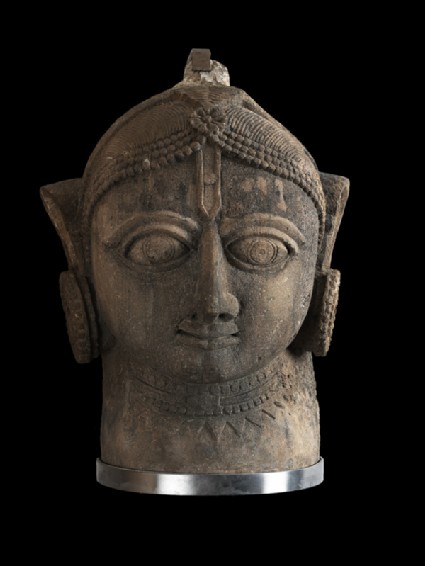Browse: 10610 objects
- Reference URL
Actions
Head of a yogini or goddess
-
Details
- Date
- 2nd half of the 17th century - 1st half of the 18th century
- Material and technique
- grey sandstone
- Dimensions
- 44 x 34 x 23 cm max. (height x width x depth)
- Material index
- Technique index
- Object type index
- No. of items
- 1
- Credit line
- Purchased, 1965.
- Accession no.
- EA1965.41
-
Further reading
Harle, J. C., and Andrew Topsfield, Indian Art in the Ashmolean Museum (Oxford: Ashmolean Museum, 1987), no. 60 on pp. 49-50, illus. p. 50
Location
Objects are sometimes moved to a different location. Our object location data is usually updated on a monthly basis. Contact the Jameel Study Centre if you are planning to visit the museum to see a particular object on display, or would like to arrange an appointment to see an object in our reserve collections.
Publications online
Galleries
© 2013 University of Oxford - Ashmolean Museum





